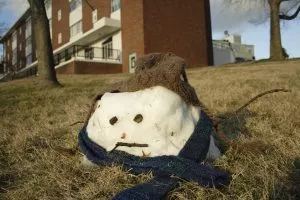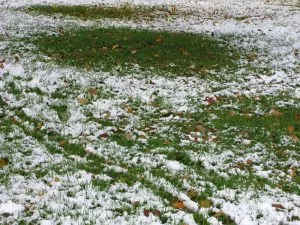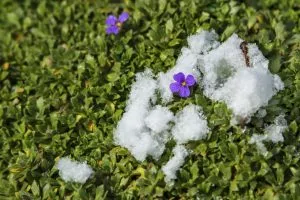At Lane’s Landscaping Supplies, winter 2015/2016 will go down as one of the warmest, mildest, snow-free winters in recent memory.
(Of course, we could get one big blast of snow. You just never know)
We know what a cold and snowy winter means for your landscaping:
- The grass on your lawn is dormant
- Interlocking patio stones may crack during freeze-thaw cycles
- Bulk salt can erode your interlocking pavers
- Topsoil can freeze
But here’s what happened with your landscaping during this relatively warm and dry winter.
Your lawn
Normally, your lawn should be dormant (alive, but not growing) in the winter.
This past winter, though, your lawn hasn’t had a chance to “rest.” It’s been growing and using nutrients all season long.
The difference is that it hasn’t received the energy it needs through watering, sunlight and fertilizer.
As a result, your lawn is “tired” and “weak.”
When spring fully hits, you may find dead or brown spots on your lawn. Even worse is that it may be diseased.
To keep your lawn healthy, you should:
- Water it weekly (just make sure the temperature won’t drop to below freezing)
- Mow your lawn if the grass has noticeably grown
- Keep foot traffic off the grass
Your patio stones
For the most part, your patio paving slabs should be in pretty good condition.
They haven’t experienced multiple freeze-thaw cycles usually associated with winter (but it’s a good idea to check them for cracks anyway).
What you may find is that more weeds than usual have sprouted between them.
Again, that’s a result of the mild winter weather creating favourable conditions for weeds to grow and thrive.
Download your FREE guide on transforming your backyard into the ultimate entertainment hub!
Your plants
Plants love two things:
- Warm temperatures
- Light
And there’s been an abundance of both during the winter.
When the temperature goes up and plants get sunshine, your plants will start blooming.
It may have looked nice, but those plants will be in trouble if any bitterly cold temperatures suddenly return.
An easy way to keep your plants healthy is to lay down a layer of mulch. That’ll keep them warm and keep moisture in the ground too.
Something else you can do is to water them from time to time (just make sure there’s no chance of the water freezing).
Since they’re going to bloom anyway while it’s warm, adding water will make sure they’re as strong as they can possibly be.
Your shrubs & bushes
Ornamental shrubs and bushes usually set their bulbs in the spring. For the most part, they should be unbothered.
If the buds on the bushes have bloomed during the winter, the colder than usual air combined with the warmth from the shrub itself will dry them out.
As a result, those blooms will die before the spring arrives and you’ll end up with fewer blooms overall.
Warm winter or early spring – we’ve got everything you need
Once spring finally hits (March 20), there’ll be work to do to get your landscaping in tip-top shape.
And we want to help.
Contact us today to learn more about our products or to get helpful landscaping advice from our team of pros.






